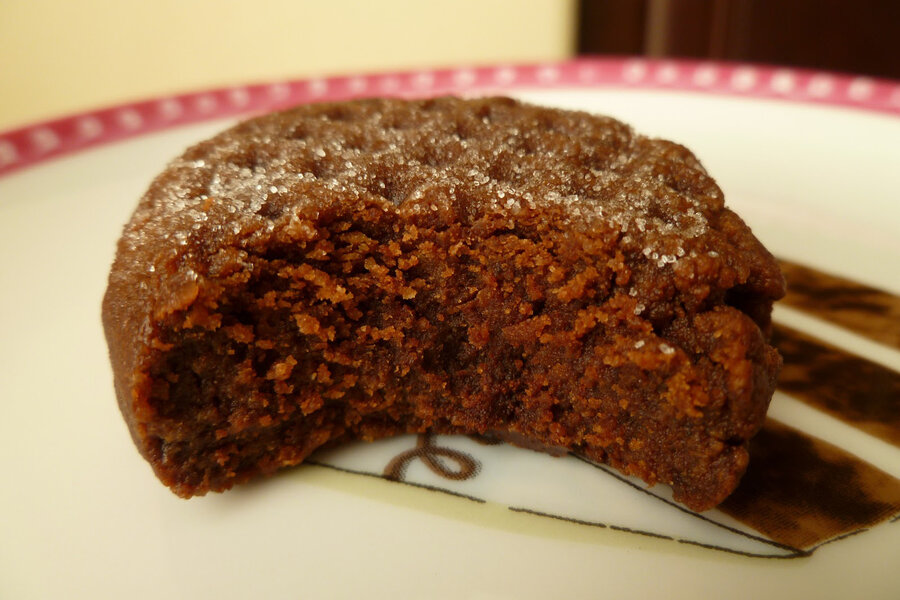By Carol Ramos, The Pastry Chef's Baking
From Averie Cooks
1 cup + 2 tablespoons creamy peanut butter (i.e. one heaping cup - plain or crunchy may be used; do not use natural or homemade peanut butter)
1 cup light brown sugar, packed (dark brown may be substituted)
1 large egg
1 tablespoon vanilla extract
1/2 cup unsweetened natural cocoa powder (Dutch-process may be substituted)
1 teaspoon baking soda
1. To the mixing bowl of a stand mixer fitted with the paddle attachment, combine peanut butter, brown sugar, egg, vanilla, and beat on medium-high speed until well-combined and the sugar is fully incorporated and is mixture is no longer gritty or granular, about 5 minutes. Stop to scrape down the bowl as necessary.
2. Add the cocoa powder, baking soda, and beat to incorporate, 1 to 2 minutes. Dough may be a bit crumbly in pieces, but pieces should all stick together forming a large mound when pinched, squeezed, and pushed together. If your dough seems dry, adding 1 to 2 additional tablespoons of peanut butter will help it combine.
3. Using a 2-inch medium cookie scoop (about 2 heaping tablespoons of dough or 1.80 ounces by weight), form dough mounds or roll dough into balls. Recipe makes 13 cookies; dividing dough into 13 equal portions is another way to do this. Place dough on a large plate and flatten each mound with a fork, making a criss-cross pattern on top. Slightly flattening the mounds before baking ensures they don't stay too domed and puffed while baking because this dough, when properly chilled, doesn't spread much; just don't over-flatten. Cover plate with plastic wrap and refrigerate for at least 2 hours, or up to 5 days, before baking. Do not bake with warm dough.
4. Preheat oven to 350F, line 2 baking sheets with parchment parchment; set aside. Space dough 2 inches apart (8 to 10 per tray) and bake for 8 to 10 minutes, until edges are set and tops are barely set, even if slightly underbaked in the center. It's tricky to discern if they're done or not because they're so dark, but watch them very closely after 7 minutes. I recommend the lower end of the baking range. Cookies firm up as they cool, and baking too long will result in cookies that set up too crisp and hard.
5. Allow cookies to cool on the baking sheet for 5 to 10 minutes before removing and transferring to a rack to finish cooling. Store cookies in an airtight container at room temperature for up to 1 week, or in the freezer for up to 3 months. Alternatively, unbaked cookie dough can be stored in an airtight container in the refrigerator for up to 5 days, so consider baking only as many cookies as desired and save the remaining dough to be baked in the future when desired.








